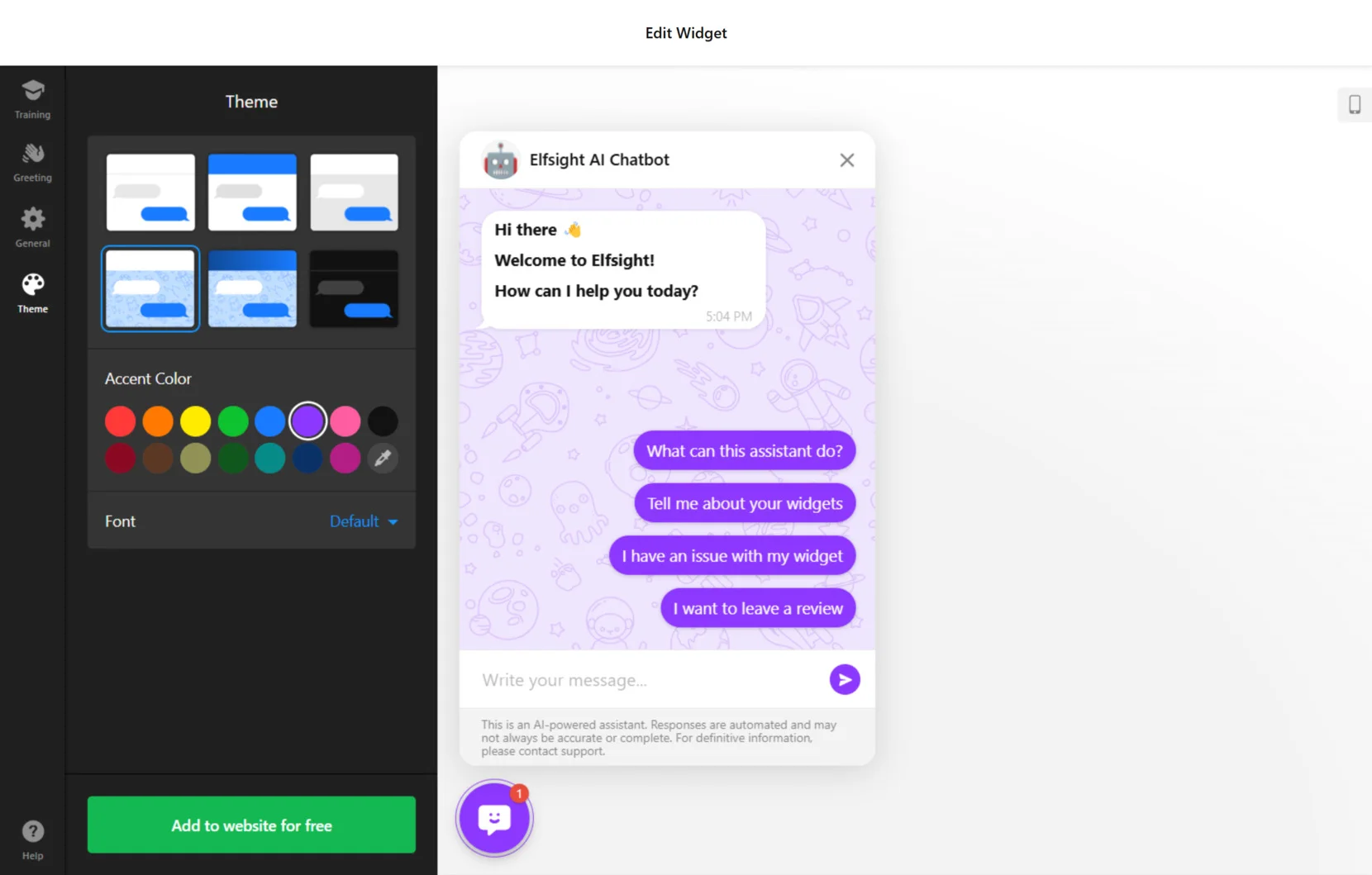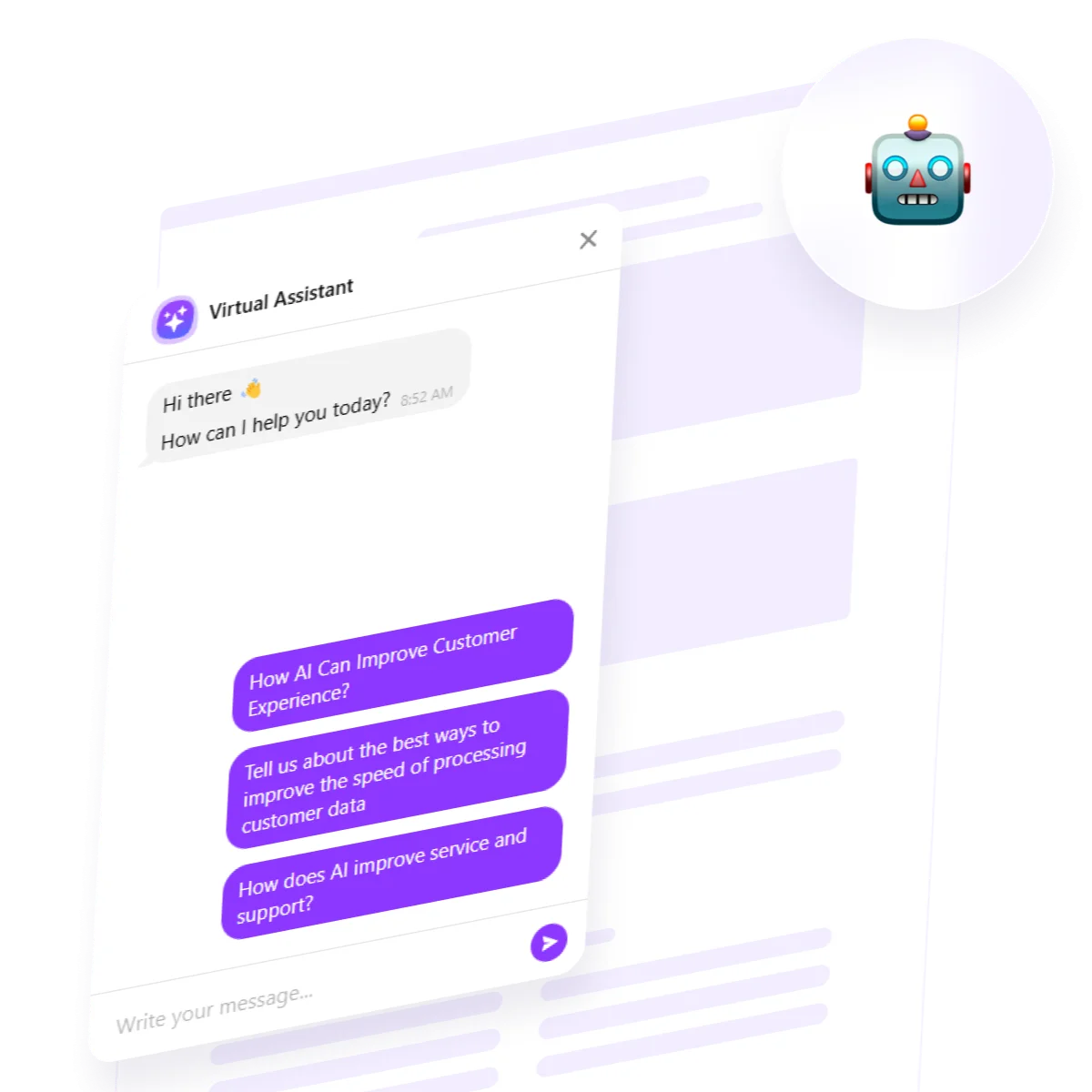In today’s fast-paced digital landscape, businesses must continuously innovate to meet rising customer expectations. Artificial Intelligence has emerged as a game-changer, revolutionizing how companies engage with their clients. Different AI-driven solutions are enhancing customer interactions, making them faster, smarter, and more efficient.
But how does AI improve customer experience, and what are the most effective ways to leverage it? In this article, we’ll explore 8 AI-powered strategies that businesses can implement to enhance service quality, streamline operations, and deliver hyper-personalized experiences. Whether you’re in retail, finance, healthcare, or any customer-centric industry, using AI to improve customer experience is no longer a luxury — it’s a necessity for staying competitive.
The Role of Artificial Intelligence in Customer Experience
The role of artificial intelligence in customer experience is centered around improving efficiency, personalization, and overall satisfaction. By leveraging machine learning, natural language processing, and automation, AI enables businesses to understand customer needs, predict behaviors, and deliver seamless, real-time support.
How AI is improving customer experience
- Enhanced personalization. AI analyzes vast amounts of customer data to provide tailored recommendations, targeted marketing campaigns, and individualized interactions. This ensures that every customer feels valued and understood.
- Automation and efficiency. From AI-powered chatbots to virtual assistants, AI streamlines operations by handling repetitive inquiries, reducing wait times, and ensuring 24/7 availability.
- Predictive customer insights. Machine learning enables businesses to anticipate customer needs, proactively address issues, and provide data-driven solutions before customers even ask.
- Real-time decision making. AI processes customer queries, transactions, and feedback in real time, allowing businesses to make instant, informed decisions that enhance the overall customer journey.
- Emotion and sentiment analysis. AI detects customer emotions through tone analysis and sentiment tracking, allowing companies to adjust their responses and improve engagement strategies.
A Quick Way to Drive Customer Engagement: AI Chatbot
If you’re looking for a fast and simple way to boost customer experience, integrating an AI chatbot into your website is a great starting point. Among the many options available, the Elfsight AI Chatbot widget stands out as one of the most user-friendly and effective solutions for businesses of all sizes.
Setting up an AI Chatbot on your website:
Getting started with Elfsight AI Chatbot is quick and simple. Follow these easy steps to integrate AI into your business in just a few minutes:
- Open the widget editor and input your website URL or business information to set up your assistant.
- Configure the chatbot’s responses, greeting message, and any additional instructions.
- Customize the widget’s design, settings, and theme to match your website’s style.
- Publish the chatbot, copy the embed code, and add it to your website. And that’s it!

This no-code chatbot requires no technical expertise, making it an ideal choice for businesses looking to improve customer interactions without the need for development skills. In just a few clicks, you can add an AI-powered assistant to your website that enhances communication, provides instant support, and automates responses, ultimately creating a more seamless and engaging experience for your customers. And all of this can be done without costly development resources.
Here’s how a website AI chatbot can drive customer engagement and improve customer experience:
- Instant, 24/7 support. Provide round-the-clock assistance, ensuring customers can get help whenever they need it.
- Quick response times. AI chatbots can instantly respond to customer inquiries, reducing wait times and enhancing satisfaction.
- Personalized interactions. Tailor conversations based on user preferences and previous interactions, making customers feel understood and valued.
- Proactive conversations. Initiate chats based on user behavior, guiding them toward solutions or offers.
- Multilingual support. Serve a global audience by offering assistance in multiple languages, making customers feel more comfortable.
Create your own AI-powered customer engagement chatbot with our easy-to-use editor!
How to Use AI to Improve the Customer Experience
By integrating AI-driven business solutions, companies can create a more intuitive, responsive, and personalized customer experience that fosters long-term loyalty. Up next, we’ll explore 8 specific ways of using AI to improve customer experience and transform client engagement.
🚨 Service Quality and Proactive Support
AI-powered predictive analytics and sentiment analysis allow businesses to anticipate customer needs and address issues before they escalate. By analyzing historical data, AI can predict common problems and deliver solutions in advance, reducing friction and improving customer satisfaction.
Benefits:
- Prevents problems before they happen. By predicting issues based on past behavior, businesses can offer solutions before customers even reach out for help.
- Enhances service quality. Customers benefit from faster and more accurate support, which improves their overall experience with the brand.
- Builds trust and loyalty. Proactive support creates an impression of reliability, making customers feel valued and strengthening their long-term loyalty.
- Reduces customer effort. Anticipating issues helps customers avoid unnecessary steps and minimizes frustration.
🎯 Personalization at Scale
AI allows businesses to offer hyper-personalized experiences by analyzing customer data to understand individual preferences. This enables companies to deliver tailored recommendations, content, and communications, creating a customized experience that resonates with each customer.
Benefits:
- Increases conversion rates. Personalized recommendations are more likely to drive purchases, as they match the customer’s preferences and needs.
- Improves customer retention. Tailored experiences foster loyalty by making customers feel understood and valued.
- Boosts engagement. Personalized content and offers increase interaction with customers, leading to more frequent purchases and better relationships.
- Optimizes marketing efforts. AI helps target the right customer segments at the right time, increasing the effectiveness of marketing campaigns.
🤖 Efficiency Through Automation
AI-driven automation tools streamline repetitive tasks, such as answering frequently asked questions or processing transactions. Automating these processes not only improves efficiency but also frees up valuable resources for more complex customer service needs.
Benefits:
- Reduces operational costs. Automating repetitive tasks lowers the need for human intervention, reducing staffing and training expenses.
- Improves response times. Automation ensures customers receive instant responses to common queries, enhancing their experience.
- Increases scalability. Automation can handle a large volume of requests, making it easier to scale customer service operations without compromising quality.
- Improves consistency. Automated systems provide uniform responses, ensuring customers receive reliable information each time.
🔒 AI-Powered Fraud Detection and Security Enhancements
AI’s ability to analyze large datasets and detect patterns is critical for improving fraud detection and security. AI identifies suspicious behavior, such as unauthorized transactions or unusual login attempts, and can quickly alert businesses to take action.
Benefits:
- Identifies fraud faster. AI quickly flags unusual patterns, helping prevent fraudulent activities before they cause harm.
- Reduces false positives. AI models improve the accuracy of fraud detection, ensuring that legitimate transactions are not incorrectly flagged.
- Increases customer trust. By securing sensitive customer data, AI helps businesses build trust and credibility with their audience.
- Protects against evolving threats. AI systems are continuously updated to detect new fraud tactics, making them adaptable and resilient.
🗣 Voice and Conversational AI for Seamless Communication
AI-driven voice assistants and conversational interfaces enable businesses to interact with customers in a natural, intuitive way. By using natural language processing (NLP), AI understands and responds to customer inquiries, whether spoken or written, creating a seamless experience.
Benefits:
- Improves accessibility. Voice and conversational AI enable hands-free, easy access to customer service, catering to a wider range of customer needs.
- Reduces wait times. AI provides instant responses to customer queries, cutting down the time spent waiting for human agents.
- Enhances customer satisfaction. Conversational interfaces create a more engaging and personalized experience, making customers feel heard and understood.
- Increases availability. AI-powered systems can operate 24/7, ensuring that customers always have access to support, even outside regular business hours.
🎨 Hyper-Personalized Marketing with AI
AI empowers businesses to deliver personalized marketing campaigns at scale. By analyzing customer data, AI helps businesses craft targeted messages, content, and offers that align with individual customer preferences, improving marketing efficiency and effectiveness.
Benefits:
- Boosts engagement. Tailored messages resonate more with customers, leading to higher engagement and click-through rates.
- Increases conversion rates. Personalized marketing is more relevant, making customers more likely to take the desired action, such as purchasing or signing up.
- Optimizes resource allocation. AI ensures that marketing resources are focused on high-potential customers, maximizing return on investment.
- Enhances customer experience. Delivering content that matches a customer’s needs and interests makes the overall experience more satisfying and relevant.
📈 AI-Enabled Customer Insights for Better Decision-Making
AI helps businesses gain valuable customer insights by analyzing large datasets and uncovering trends in behavior and preferences. These insights inform decision-making, from product development to customer service strategies, allowing businesses to stay ahead of customer needs.
Benefits:
- Improves decision-making. AI provides accurate, data-driven insights, empowering businesses to make more informed choices.
- Uncovers emerging trends. AI identifies shifts in customer behavior and preferences, allowing businesses to adapt quickly.
- Optimizes offerings. By understanding what customers want, businesses can fine-tune their products, services, and strategies.
- Enhances customer satisfaction. Leveraging insights ensures that businesses address customer pain points and improve overall experience.
🛒 AI in Augmented Reality (AR) for Interactive Shopping
AI enhances the augmented reality (AR) shopping experience, enabling customers to try out products virtually before purchasing. Whether testing makeup, furniture, or clothing, AI makes the online shopping experience more immersive and interactive, leading to more informed purchase decisions.
Benefits:
- Increases customer confidence. Customers can visualize products in real life, leading to more informed and confident buying decisions.
- Reduces returns. By trying products virtually, customers are less likely to be disappointed with their purchases.
- Enhances the shopping experience. AI-powered AR creates a more engaging and enjoyable experience, differentiating brands from competitors.
- Boosts customer engagement. Interactive features encourage customers to spend more time on the platform, leading to higher sales.
AI Tools for Customer Experience Examples
AI tools have become integral in reshaping the customer service landscape. These tools allow businesses to deliver superior customer experiences by predicting behavior, personalizing interactions, automating routine tasks, and providing real-time insights. By implementing AI-driven tools across different customer touchpoints, companies can enhance service quality, drive engagement, and improve customer satisfaction.
Below is a table of AI tools and their specific purposes, highlighting how each tool can be leveraged to improve various aspects of customer experience:
| Tool type | Description | Tools examples |
|---|---|---|
| AI Chatbots | Provide instant responses to customer inquiries, proactively resolving common issues and offering support 24/7. | Elfsight AI Chatbot, Tidio, Intercom |
| Predictive Analytics Tools | Analyze customer data and predict potential issues or opportunities, allowing businesses to intervene proactively. | Pega Systems, Salesforce Einstein |
| Sentiment Analysis Tools | Analyze customer interactions to detect emotions such as frustration or dissatisfaction, enabling proactive intervention. | MonkeyLearn, Lexalytics, IBM Watson |
| Recommendation Engines | Suggest products, content, or services tailored to a customer’s preferences by analyzing their behaviors and interests. | Dynamic Yield, Algolia, Adobe Target |
| Dynamic Content Management | Adjust website content in real-time to reflect each customer’s individual browsing behavior and interests. | Optimizely, Adobe Experience Manager |
| Robotic Process Automation | Use AI to automate data-heavy tasks like invoice processing, form filling, and email sorting, which increases operational efficiency. | UiPath, Automation Anywhere, Blue Prism |
| Fraud Detection Tools | AI tools that analyze transaction data and detect fraudulent activities in real-time, providing an additional layer of security. | Kount, Riskified, Signifyd |
| Biometric Authentication | AI-powered biometric tools, such as facial recognition or fingerprint scanning, help secure customer access. | Face++, Trulioo, Onfido |
| Behavioral Biometrics | Analyze user behavior patterns like typing speed or mouse movements to identify potentially fraudulent actions. | BioCatch, SecuredTouch, BehavioSec |
| Voice Assistants | Enable customers to interact with businesses using voice commands, simplifying tasks like placing orders or asking for support. | Google Assistant, Amazon Alexa, Apple Siri |
| Conversational AI Platforms | Use NLP to facilitate intelligent conversations with customers, enabling both voice and text interactions. | Dialogflow, Watson Assistant, Rasa |
| Email Marketing Platforms | Leverage AI to segment customer lists and send personalized email messages based on behaviors, preferences, and history. | Mailchimp, HubSpot, ActiveCampaign |
| Ad Targeting Tools | Use AI to optimize and deliver personalized advertisements based on customer behavior, location, and demographic data. | Facebook Ads, Google Ads, AdRoll |
| Customer Analytics Platforms | Use AI to analyze customer behavior, track patterns, and derive actionable insights that drive decision-making. | Google Analytics, HubSpot Analytics, Kissmetrics |
| Survey and Feedback Analysis | Use AI to analyze survey responses and feedback, providing valuable insights into customer satisfaction and preferences. | SurveyMonkey, Qualtrics, Typeform |
| AR Shopping Tools | AI-powered AR tools enable customers to visualize products like furniture or clothing in their own space, enhancing the shopping experience. | Zebra Medical Vision, IKEA Place, ViewAR |
| AI-Powered Visual Search | AI tools that allow customers to search for products by uploading images, providing a seamless and intuitive shopping experience. | Pinterest Lens, Google Lens, CamFind |
| Interactive 3D Visualization | AI tools that offer 3D views of products, allowing customers to interact with the item from every angle before purchase. | Sketchfab, 3D Cloud, Threekit |
Challenges and Ethical Considerations
AI technology brings numerous benefits to customer experience, but its adoption is not without challenges. Companies must carefully consider the implications of using AI for business purposes to ensure a responsible, ethical, and effective approach.
Data Privacy and Security Concerns
As AI technologies rely heavily on data to function effectively, the use of personal and sensitive customer information becomes a critical concern. AI systems require vast amounts of data to personalize customer interactions, predict behaviors, and improve decision-making. However, this dependence on customer data raises the risk of potential data breaches or misuse. Customers are becoming more aware of their data privacy rights and expect businesses to protect their personal information.
Impact: Mishandling customer data or failing to meet privacy regulations can result in significant legal penalties, loss of customer trust, and reputational damage. Customers may decide to disengage with brands that do not prioritize their privacy, opting for those that do.
The key to overcoming this challenge is building a strong data governance framework that incorporates robust security measures, encryption protocols, and transparent data usage policies.
Bias in AI Algorithms
AI systems are trained on historical data, and if that data contains biases—whether related to gender, race, location, or other factors—the AI models can replicate and even exacerbate those biases. For example, an AI system that recommends products based on past purchasing patterns may unintentionally reinforce stereotypes or disadvantage certain customer groups. Biases in AI algorithms can harm customer experiences, limit opportunities for some groups, and reduce trust in AI-powered systems.
Impact: Biased AI systems can lead to discriminatory outcomes, alienating potential customers, creating public backlash, and damaging brand reputation.
Addressing this challenge requires continuous monitoring and auditing of AI models to ensure they are fair, transparent, and free from bias. Regularly updating training data to reflect a diverse range of customer profiles can also help mitigate the risk of bias.
Job Displacement and Automation Anxiety
AI and automation technologies are transforming industries by automating repetitive tasks and providing new efficiencies. While this can significantly improve customer experience, there is concern that these technologies may replace human jobs, particularly in customer service. Employees may fear job displacement as AI systems are increasingly used to handle customer queries, issue resolutions, and even sales.
Impact: Increased anxiety among employees, resistance to new technology, and a loss of employee morale if they feel threatened by automation. Companies may also face negative public sentiment if they are seen as displacing human workers without offering opportunities for re-skilling.
Businesses can address this by using AI as an augmentation tool rather than a replacement, enabling employees to focus on higher-value tasks while AI handles routine processes. Investing in employee training and reskilling programs can help workers adapt to new roles in a more automated environment.
Transparency and Accountability
AI’s “black-box” nature often makes it difficult for both customers and businesses to understand how AI systems make decisions. Lack of transparency in AI models means that customers may not trust the outcomes of AI-powered decisions. This could lead to confusion, frustration, and a lack of accountability when AI-driven systems fail to meet customer expectations.
Impact: Customers may lose confidence in AI-driven services if they cannot understand or challenge the decisions being made. For example, AI might deny a customer’s claim or recommendation without providing a clear explanation, leading to dissatisfaction and lack of trust.
To overcome this challenge, businesses need to prioritize creating explainable AI systems. This includes implementing clear communication about how AI makes decisions and ensuring accountability for AI outcomes.
Ethical Use of AI
AI technology, when misused, can have detrimental effects on customers and society as a whole. Ethical concerns include AI’s potential for manipulation, excessive personalization, and invasiveness, leading to customer exploitation. Additionally, there is the risk of AI-driven decisions affecting vulnerable groups unfairly or inappropriately.
Impact: Misuse of AI can result in public outrage, legal repercussions, and severe reputational damage. Brands may also suffer long-term customer disloyalty if their AI practices are perceived as manipulative or invasive.
Companies need to develop ethical AI guidelines, enforce responsible practices, and focus on building systems that respect privacy and autonomy. Artificial intelligence should be deployed to enhance the customer experience and societal well-being, not manipulate or exploit customers.
Conclusion
AI is a powerful tool that’s reshaping the landscape of customer experience. From hyper-personalization and proactive support to voice-powered interfaces and predictive analytics, AI is transforming how businesses engage with their customers. However, businesses must consider the challenges and ethical implications of implementing AI technologies to avoid potential pitfalls and maintain customer trust.
Looking forward, AI will continue to drive innovation in customer engagement, with trends such as emotion-aware AI and augmented reality playing a significant role in the future. By embracing these advancements responsibly, businesses can ensure that they stay ahead of the curve and deliver exceptional experiences that delight their customers.







